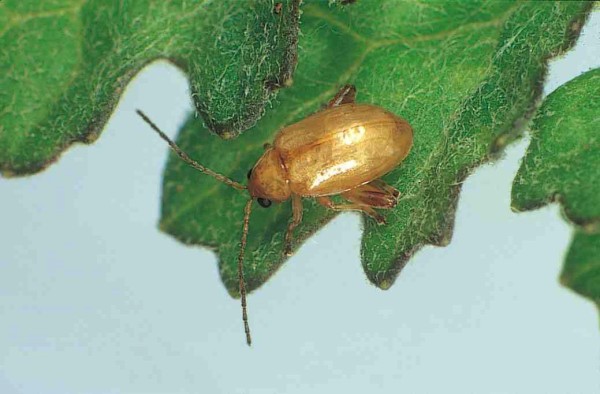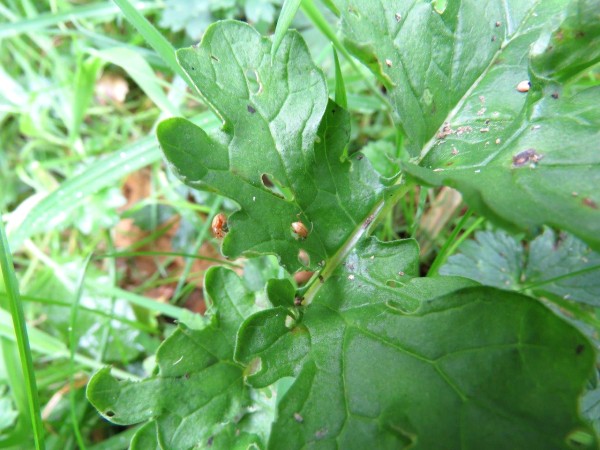Have You Seen Ragwort?
As a start, senior technician Hugh Gourlay contacted several farm owners, and regional council and Department of Conservation staff, to look for the insects, take photos of the damage, and make estimates of the extent of the ragwort infestations.

Ragwort flea beetle adult

Beetle feeding damage
From the reports Hugh has received so far the flea beetle is present at most of the sites in both the North and South Islands. The plume moth has been absent from most of the sites except for Wellington, although autumn is not the best time of year to be looking for it. If you would like to add to our data set to help us understand the reason for increased reports of ragwort problems, you can help by following the instructions below.
- Take a photo of your ragwort infestation.
- Inspect some ragwort plants to looks for signs of damage, as seen in the photos. Rosette plants have small holes in the leaves like shotgun pellets. You may even see adult beetles.
- If the plants have upright stems and flowerheads/seedheads, pull the stems apart to see if you can find any larvae, as seen in the photo.
Ragwort plume moth
Ragwort plume moth larva
Please return your report, with photographs, to: gourlayh@landcareresearch.co.nz.
Thank you for your help!

